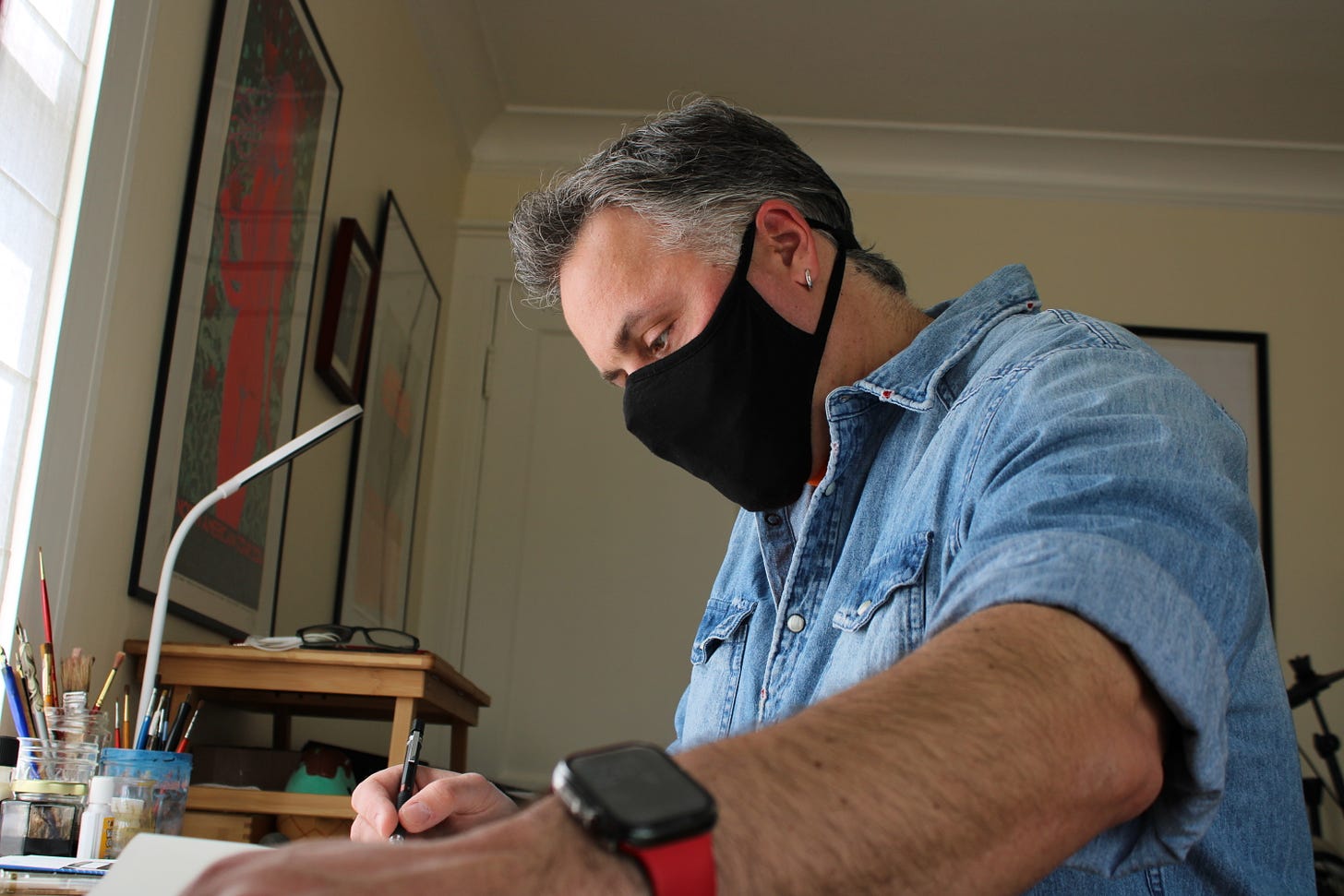A Preface
“Those who cannot remember the past are condemned to repeat it.” - George Santayana
Less than 24 hours ago a mass shooter murdered 10 innocent people in Buffalo, NY. Motivated by hate, racism, and a belief in the twisted narrative of white supremacy, someone who is only 18 years old took the lives of innocent people. This should be shocking for me, but it is not. It is history repeating itself —like we live in some twisted maze of historical horror where we keep reliving the same sick nightmare over and over again. Last month, I spoke to an artist who has personally experienced what it is like to live in a society torn asunder by festering hate and an insistence on misremembering the past. Now is the perfect time for Miha to share his story.
A Nation At War With Itself
“I remember waiting for my then girlfriend,” said Seattle-based artist Miha Sarani who at the time was 17 or 18 years old and still living in Slovenia (formerly Yugoslavia). “I was standing in this parking lot facing the school my girlfriend went to. And I'm sort of leaning on this cement walkway, smoking cigarettes, and maybe like less than six feet away from me there's a guy standing there. But It's not just the two of us, there are other people around. Then another guy walks up — a random person just walks up to this guy, that's like less than six feet to my right — and shoots him in the head. And the guy drops dead right next to me.”
That was Slovenia in the 1990s. That is what happened when war broke out and Yugoslavia fractured into six separate nations: Bosnia and Herzegovina, Croatia, Macedonia, Montenegro, Serbia, and Slovenia. The teenage Miha Sarani had witnessed one of the many senseless random killings that happened after the war. It was the rage, the seething anger so many people harbored and festered within themselves that fueled a wave of violence, Miha said.
“Imagine that you’re a 12-year-old, a 13-year-old, 14-year-old,” Miha offered. “And today, you have everything. You have your bed, your room, your clothes, your record collection, your books, your whatever. And then tomorrow, a war starts. And everything you've ever known, owned, possessed, is gone. Every person that lives in your building, in your neighborhood, in your city, is either trying to kill you because you're a different nationality, or they are also dispersed. And now you find yourself as a refugee in another country. And you realize, everything you ever had, everything you ever worked towards, is gone. And it'll never come back. And so, there was so much anxiety from the youth in those days that it was often the catalyst that became violence: violence against each other and violence against others.”
Understanding Reality
When I parked at the curb of Miha’s Seattle home, there were no outward indicator that he had experienced such harrowing events. From the sidewalk, the home looked tidy, suburban even: a clean-cut yard and a well-maintained structure in a neighborhood where I imagine a family could safely nurture a few kids. But when I entered the dining room there was a large-scale painting that bordered on the edge menacing.

“You can sort of see the two horns that are kind of like fading,” said Miha Sarani as he pointed to the painting, “and the devil himself is beginning to dissipate. He's beginning to kind of become intangible, transparent, immaterial.” The painting explores the ego, Miha said. How your ego can either fuel you or destroy you. In the case of the devil, it is a force of destruction.
“Imagine if you were the devil, and you're trying to tempt somebody, and that person is like, ‘No, thanks, I'm good.’ What would that do to your ego?” Miha asked. “I think that you would be completely obliterated, like you couldn't believe that this nobody has decided to say no to you, the second most powerful entity in the universe.” Miha believes that the ego is a big part of every artist’s motivation for creating. But he also that every artist needs to understand that ego can help or it can hinder. He said that he used to be a big fan of Kanye West before Kanye’s ego began to devour him. “He was a social commentator, right? Until his ego, I think, got the better of him. Then all of a sudden, he started believing his own hype.”
Miha’s attention returned to the painting and to history, the place in which much of his work as an artist is rooted. He speaks of Louis XIV and his Hall of Mirrors at Versailles. “The Hall of Mirrors had to two parts,” Miha said, “like two wings, and depending on where he would greet you it would tell you his intentions towards you. So, if he met you in a room of peace, that meant that he was peaceful towards you. But if he met you in a room of war, that meant that he was going to start a beef with you.” Miha glances mischievously at the dining room table and jokingly suggests that he should follow the example of Louis XIV. He points to a chair facing the horned painting, “If I put a dinner guest there, then my intentions are more nefarious, but if I make you sit over here then things are cool.” Miha has a dark sense of humor which he believes is an effective way to transmute anger.
Listen to this episode with a 7-day free trial
Subscribe to Artists Up Close to listen to this post and get 7 days of free access to the full post archives.















